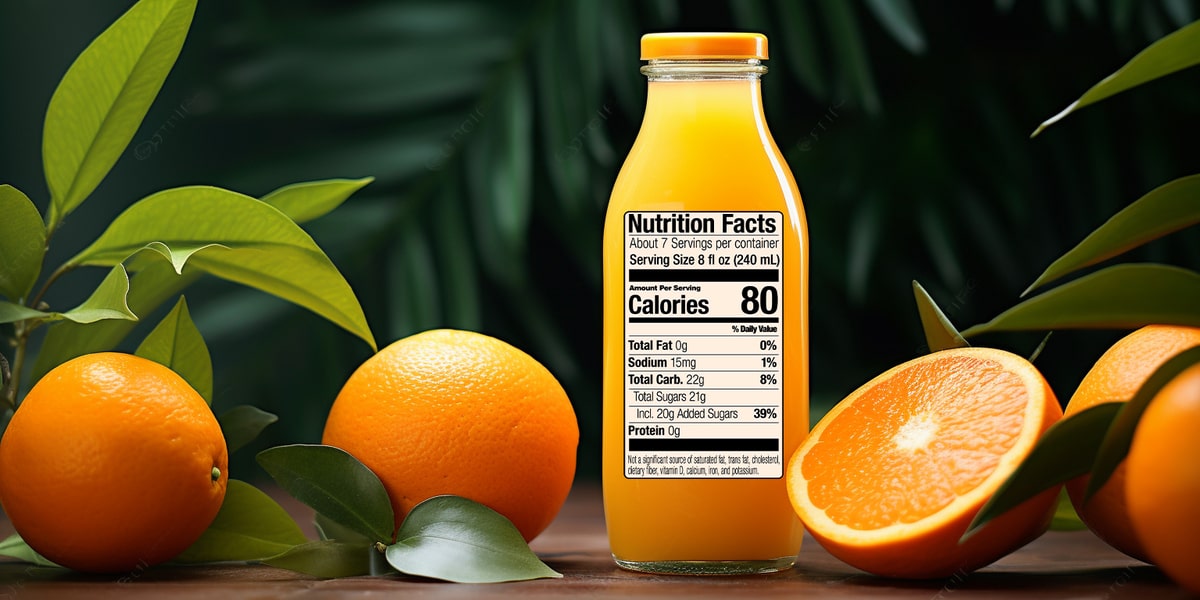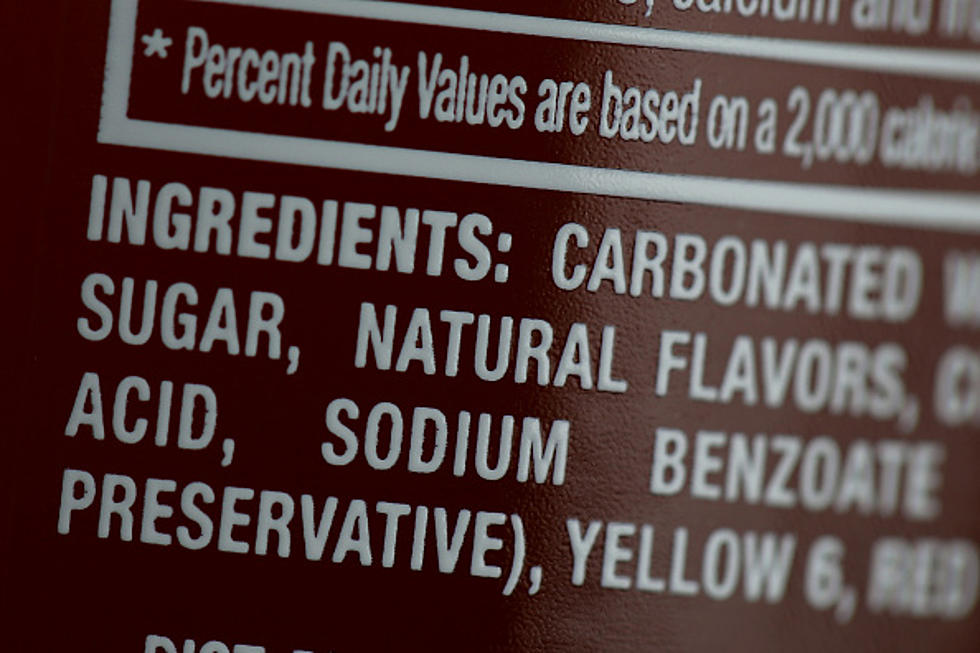
Blog
Ingredient Labels: What to Include and How to Organize Them Effectively

If you are in the food business, you surely acknowledge that ingredient labels play a crucial role in carrying necessary product information. Doing a good job of label management for pre-packaged foods is an effective measure to ensure the requirements of the industry and draw the interest and trust of consumers.
So, what should you include in your print food labels? How to organize this information properly for optimal results? This requires some learning and research, but don’t worry – because CustomAny do it for you and rounded up in this article. Keep reading to find out what to include in ingredient labels and how to format them properly.
What to Include in Ingredient Labels
Let’s start by learning what to include in ingredient labels.
The Mandatory information
1. List of ingredients
The key aspect of an ingredient label is to accurately state each ingredient. To avoid confusion, use commonly recognized names for the ingredients rather than scientific or technical terms. For instance, the FDA advises using “sugar” instead of “sucrose” to ensure clarity and understanding.
Packaged food products typically display the percentage of the main ingredient(s) or component(s) as required. This information allows consumers to understand the proportion of key elements within the food. For instance, a jar of peanut butter might indicate that it contains 85% peanuts, while another jar might proudly boast being 100% peanuts.
In cases an ingredient contains a list of sub-ingredients, indicate these sub-ingredients in parentheses.
2. Allergen information
To prioritize consumer safety, clearly indicate and highlight the presence of allergens in the ingredients list of a food product. This information serves as a valuable resource for individuals who have allergies or intolerances to specific ingredients.
Furthermore, you should include additional warning information on food labels, such as instructions to not use the product beyond its expiration date or cautions regarding usage for pregnant women.
3. Nutritional facts
The nutrition facts label enables individuals to consider important nutritional factors and make decisions that align with their personal dietary needs and health goals.
They includes:
- Serving size
- Calorie content
- % daily values
- Information about fat, protein, cholesterol, added sugars, and other components.

Additional considerations
Besides the essential information, you can consider adding some other information, such as:
- The name of the raw material, including additives.
- The function chemical preservatives serve in the recipe such as a “preservative,” “a mold inhibitor”, and “for color retention”.
- Dietary claims (organic, non-GMO, etc.)
How to Organize Ingredient Labels
How are ingredients listed on a food label? In this part, let’s find out in what order are ingredients listed on a food label.
Order by weight
When creating an ingredient list, list each ingredient in descending order of weight:
- The most significant ingredient should be listed first
- The ingredient used in the smallest quantity in your recipe should be listed last.
- This order is determined by weight, not volume.
For example, if you print label for a bread making with flour, sugar, eggs, and butter, the flour should be listed first, followed by sugar, eggs, and butter
List the sub-ingredients from greatest to least
List the sub-ingredients in order from highest to lowest:
- If an ingredient consists of multiple components, these components should be indicated within parentheses after the ingredient’s name
- Arranged them in descending order of weight prevalence.
For instance, if a food item contains chocolate chips, the label should specify “chocolate chips (sugar, chocolate, cocoa butter, soy lecithin, vanilla)” to provide a comprehensive breakdown of the chocolate chip’s ingredients.
List chemical preservatives by their common name and specify their function
- When listing chemical preservatives on ingredient stickers, use their commonly recognized names. (BHA (butylated hydroxyanisole) or sodium benzoate are examples).
- Provide details about the function of these preservatives, such as their antioxidant or antimicrobial properties.

Ingredients may need to be declared twice, especially if they serve more than one function in the product
When an ingredient serves multiple functions in the product, for each of their functions, you must list their names once.
For example, an emulsifier may also act as a stabilizer. In such cases, the ingredient may need to be included twice in the ingredient list. Each statement specifies 1 function.
“Or” and “And” in Ingredient Lists
In ingredient lists, “or” and “and” can be regulated. For instance, if a product contains interchangeable or alternative ingredients, such as vegetable oil or soybean oil, the ingredient list may use “or” to indicate that either one of these options may be used.
Exceptions and additional rules when making ingredient labels
There are several noteworthy exceptions and additional guidelines to consider when composing ingredient lists:
- Water should be clearly listed as an ingredient.
- Use the common name for an ingredient, not its scientific name. For example, “salt” should be used instead of “sodium.”
- Spices can either be individually listed or grouped under the term “spices,” unless the product itself is a spice or spice blend.
- For added natural and artificial flavors, it is acceptable to use the terms “natural flavors” or “artificial flavors” (unless one of the ingredients falls under the category of the eight major allergens)
- Color additives that are exempt from certification, such as those derived from natural sources, generally do not require specific identification. However, color additives that are not exempt from certification must be listed by name.
- Bacterial cultures should be declared along with the substrate in which they were grown and listed as “cultured milk.”
Delicate details that talk loud on ingredient labels
On custom ingredient labels, several delicate details can make a big difference:
Compliance with local and international standards
Ensure that ingredient labels comply with both local regulations and international standards (like FAD regulations). It guarantees the label provides accurate and consistent information, enhancing consumer trust in the product.
Consistent format
Ingredient labels should follow a consistent format throughout the product line of a brand. This includes using the same ingredient label template, layout, font styles, and spacing.
For example, the ingredient list should be located on the same panel of the package as your company’s name and address and the nutrition facts panel. The ingredient list is typically positioned below the nutrition facts panel.
Maintaining this cohesive placement gives consumers easy access to the necessary information and your company’s details.

Font size
You should check that the font used in your ingredient list is easily visible and legible for the consumers. While there isn’t a specified font size, the general guideline is that the lowercase letter “o” height should measure at least 1/16 of an inch.
Last thoughts
In conclusion, ingredient labels play an essential role in the food business by providing vital information about products to consumers.
This article has provided information about what should be included in ingredient labels and how to format them appropriately. By following these recommendations, businesses can ensure accurate and informative labeling that benefits both consumers and the food industry.
You may want to read more on our related blog posts:











